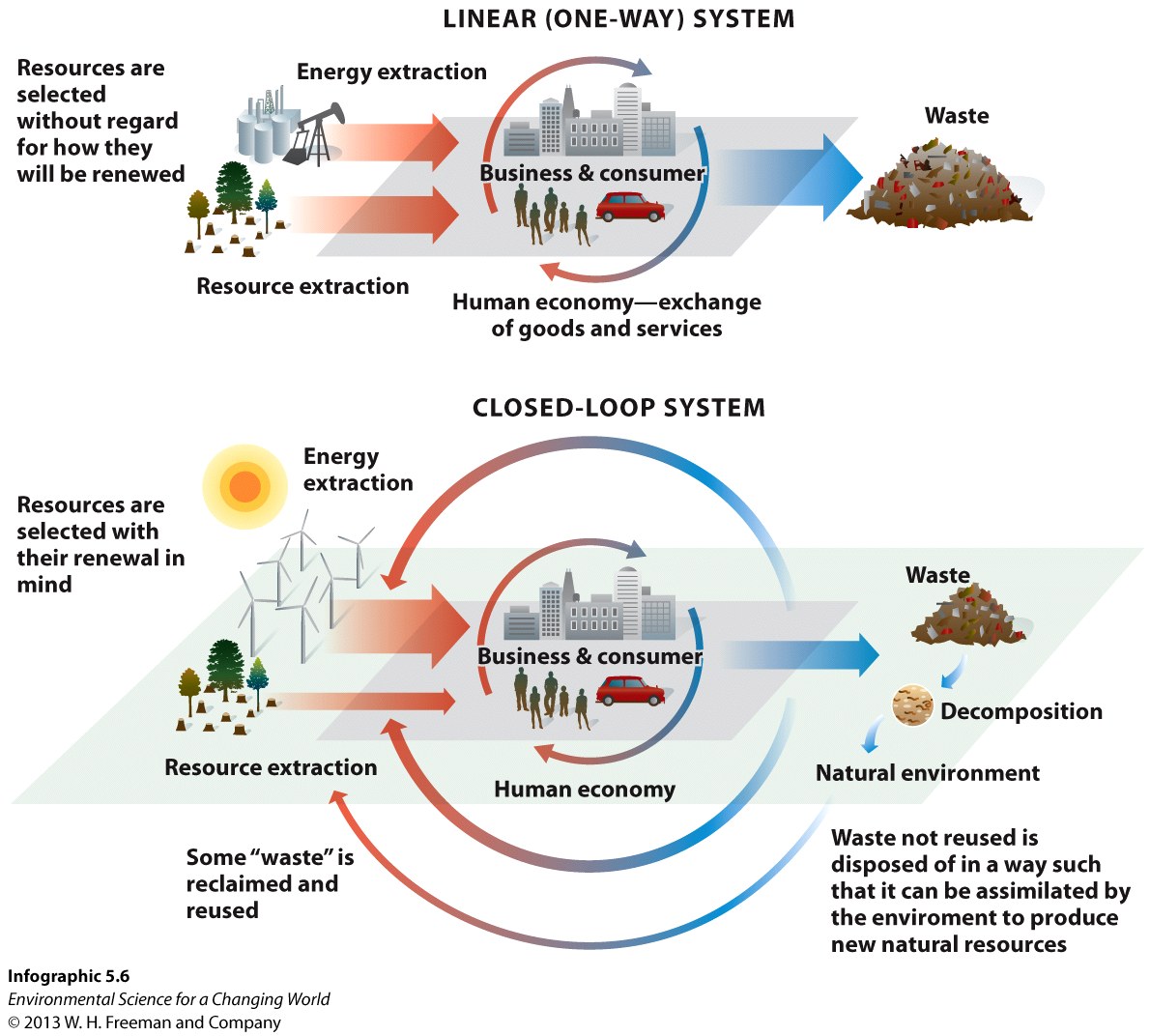
Chapter 5. Chapter 5: Environmental Economics and Consumption
How does environmentally based economics differ...

Guiding Question 5.5
How does environmentally based economics differ from mainstream economics, and how might ideas from environmental economics help industry and consumers make better choices?
Why You Should Care
It’s time to buy a new computer, but you want to buy one from a company that’s trying to make more sustainable products. So what would you need to make the most sustainable choice? How much it costs to make the product? Sure. But what if there was a way to estimate the external costs of producing the computer?
Environmental economics attempts to include external costs into the true cost. Many of the external costs are very hard to put a number value to, so some environmental economists argue that making less waste overall definitely decreases external costs. Today, companies are beginning to adopt sustainability practices for a variety of reasons: increasing costs of disposing of wastes, demand from consumers and shareholders for more sustainable products, and predicted future costs of scarcer non-renewable energy and materials.
Test Your Vocabulary
Select the appropriate term for each of the following definitions:
| Term | Definition |
|---|---|
| To give more weight to short-term benefits and costs than to long-term ones. | |
| Economic and social development that meets present needs without preventing future generations from meeting their needs. | |
| New theories of economics that consider the long-term impact of our choices on people and the environment. | |
| Management of a resource that considers the impact of its use at every stage of the process. | |
| A production system in which the product is folded back into the resource stream when consumers are finished with it, or is disposed of in such a way that nature can decompose it. |

Question Sequence
1.
How does a cradle-to-cradle approach use consumers as part of the lifecycle solution for a product?
2.
Does a closed-loop system benefit the corporation directly (in terms of internal costs of production)?
3.
How does the concept of discount future value decrease environmental economic approaches?
4.
Do discounted future values incorporate internal, external, or true costs?
Question Sequence
5. Test Your Vocabulary
Select the appropriate term for each of the following definitions:
| Term | Definition |
|---|---|
| Doing business in a way that is good for people and the environment. | |
| A business model whose focus is on leasing and caring for a product in the customer's possession rather than on selling the product itself (selling the service that the product provides). | |
| Providing information about how a product is made and where it comes from. Allows consumers to make more sustainable choices and support sustainable products and the businesses that produce them. |
6.
Bananas are on sale in the grocery store today. Each bunch of bananas has a special sticker that read "Grown Green – Costa Rica". This is an example of
| A. |
| B. |
| C. |
| D. |
7.
The lifecycle of a typical laptop sees it assembled in a factory, shipped overseas, sold from a store, used, and then disposed of in a landfill. This process looks most like:
| A. |
| B. |
| C. |
| D. |
8.
If the laptop from the previous question was accepted back at the store and recycled for parts instead of being landfilled, this process now looks most like:
| A. |
| B. |
| C. |
| D. |
9.
Which of the following economics would include ecolabeling?
| A. |
| B. |
| C. |
| D. |
Short-Answer Questions
Smart phones are the fastest growing segment of the cell phone market (more than 600 million were sold globally in 2011 and that number expected to double in 2012. Smart phones require more electronics and more sophisticated batteries than simpler cell phones. Most cell phone providers have recycling or disposal programs when consumers upgrade to a new phone. Most of those programs are not reviewed by outside agencies and so the fate of the cell phone is unknown.
Imagine if there were a proposal to create an ecolabel for smart phones (and all new cell phones) that gave details about the origin and ultimate destination of parts. You could see if the phone would be dis-assembled for parts in new phones, if the phone was produced in a low- or no-waste factory, and the ultimate fate of the phone when you recycled it.
1) If money was no object, which model is the most sustainable choice?
2) Sustainability has become an advertising keyword recently and there have been claims that some companies are creating sustainability advertising campaigns for products that are only slightly more sustainable. Is this a fair criticism?
3) What information would you need to decide if a company is practicing "green" or "sustainable" approaches?
4) If you had the choice of two products—one from a typical business and another from a sustainable business—which would you choose if the prices were equal? Would your choice be different if the sustainable one cost 10% more? What about 25% more?
2) It would be hard to discover if the company were not living up to their advertising. Ecolabeling is very helpful here since the labeling organization audits companies to make sure they are actually carrying out what they claim to be doing. Also, like many business changes, small changes over years are the norm, most companies won’t change quickly.
3) Sustainability works only when the company is open about its practices—videos and presentations of results, ongoing audits by outside organizations, and a responsiveness to consumer questions. To be sure, a consumer would really need to spend time researching all of these things themselves.
4) Typical consumer surveys say that 10% is about the most people will pay for sustainability.
Activity results are being submitted...